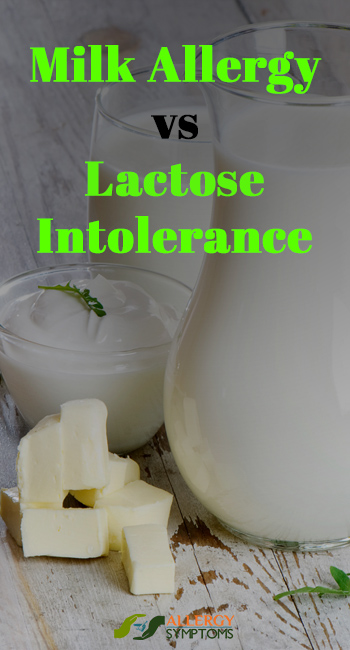If you think milk allergy and lactose intolerance are same, then you are absolutely wrong, don’t get confused with milk allergy and lactose intolerance. Even though it shares similar symptoms, but milk allergy can be life threatening and detection from an experienced doctor is strongly recommended for accurate and concise results.
We are here to explain the differences between milk allergy and lactose intolerance and help you to find out the symptoms and severities of these two problems.
In this article, we will get to know about causes, symptoms, diagnosis and manageable methods to control both milk allergy and lactose intolerance.
What Is Milk Allergy?
Milk allergy generally results from hypersensitivity of the immune system to protein of milk. Symptoms will occur within minutes or hours after contact with milk and can range from mild to severe reactions in your body.
Casein and whey are the two main proteins in milk which lead to allergic reactions in our immune system.
Symptoms Of Milk Allergy
People will experience the following symptoms if they are allergic to milk.
- Hives
- Wheezing
- Vomiting
- Gastrointestinal issues such as diarrhea in very rare cases
- It even leads to anaphylaxis.
- Bloody stools especially in infants
What Is Lactose Intolerance?
Lactose intolerance is unrelated to immune system. The sugar found in milk consists of lactose with lactase enzymes; lactose intolerance happens if we do not have these enzymes to breakdown lactose in our body and lead to certain symptoms shown below.
Symptoms Of Lactose Intolerance
Symptoms of lactose intolerance develop within few hours after consuming the food or drinks that contain little amount of lactose.
The following are some of the symptoms of lactose intolerance
- Diarrhea
- Bloated stomach
- Stomach cramps and pain
- Stomach rumbling
- Feeling sick
Milk Allergy Vs Lactose Intolerance
Milk allergy and lactose intolerance are two different things. Milk allergy usually shows up and reacts in early stage of life and coming to lactose intolerance, it is more common and takes longer time to develop and can occur at any time of life.
Diagnosing Lactose Intolerance Vs milk Allergy

Lactose intolerance can be hard to diagnose when compared with milk allergy, even though it shares similar symptoms. But your doctor may ask you to keep and try certain dairy products that give you negative impact on your digestive system. If it is not confirmed, then he will continue with some lab tests that are shown below:
Hydrogen Breath Test
Undigested lactose will produce high amount of hydrogen gas in your breath. So, he will prefer a lactose loaded drink to diagnose lactose intolerance by measuring this hydrogen after you have drink.
Food Allergy Test
If you are allergic to food then your doctor may suggest you for skin test or blood test to know the exact reason for your allergy.
Stool Acidity Test
Even undigested lactase also increases the amount of acid in your stool. Doctors will undergo this test to diagnose lactose intolerance especially in children.
How To Manage Lactose Intolerance And Milk Allergy
- The first and foremost step to do when you are experiencing the above symptoms is to avoid all milk products that contain lactose.
- Never every try to buy products of milk without reading labels on the packet.
- Milk is fairly easy ingredient to substitute in all types of recipes. If you are allergic to milk or substituent’s of milk then talk to your pediatrician before taking it in your food.
- Try to replace all dairy products with non dairy products which are made from rice, almond, soy and other ingredients.

